By Kateryna Polyanska
Translated by Jennifer Castner
A thorough analysis of the impacts of the military invasion on Ukraine’s protected natural areas will only be possible after the war’s end and demining operations are complete. However, it is already possible to gather some information. In her report, Kateryna Polyanska wrote about the impacts that we can already document.
The war impacts all aspects of nature. Dangerous emissions from numerous explosions and fires at civil and industrial infrastructure sites enter the air. Ground and surface waters are polluted following damage to purification systems, fuel and lubricant spills, equipment sinking in water bodies, and explosions in the waters of rivers, lakes, and seas. Toxic substances from explosive mixtures of bombs and rockets, poisonous components of rocket fuel and phosphorus ammunition enter soils where munitions land. Flora and fauna experience powerful negative impacts due to forest fires, destruction of habitats, noise pollution; animals die in explosions.
What is the current status of some of Ukraine’s most valuable landscapes? Kateryna Polyanska was able to visit several national parks in fall 2022 and conduct an initial analysis of the impacts.
Holosiivskyi National Natural Park (NNP)
In September, Kateryna Polyanska, an environmental scientist at the International Charitable Organization Environment-People-Law (EPL), joined with staff of Holosiivskyi NNP and the local forestry service to survey several areas in Sviatoshynsky Forest, adjacent to the city of Irpin, which suffered in hostilities in spring 2022.
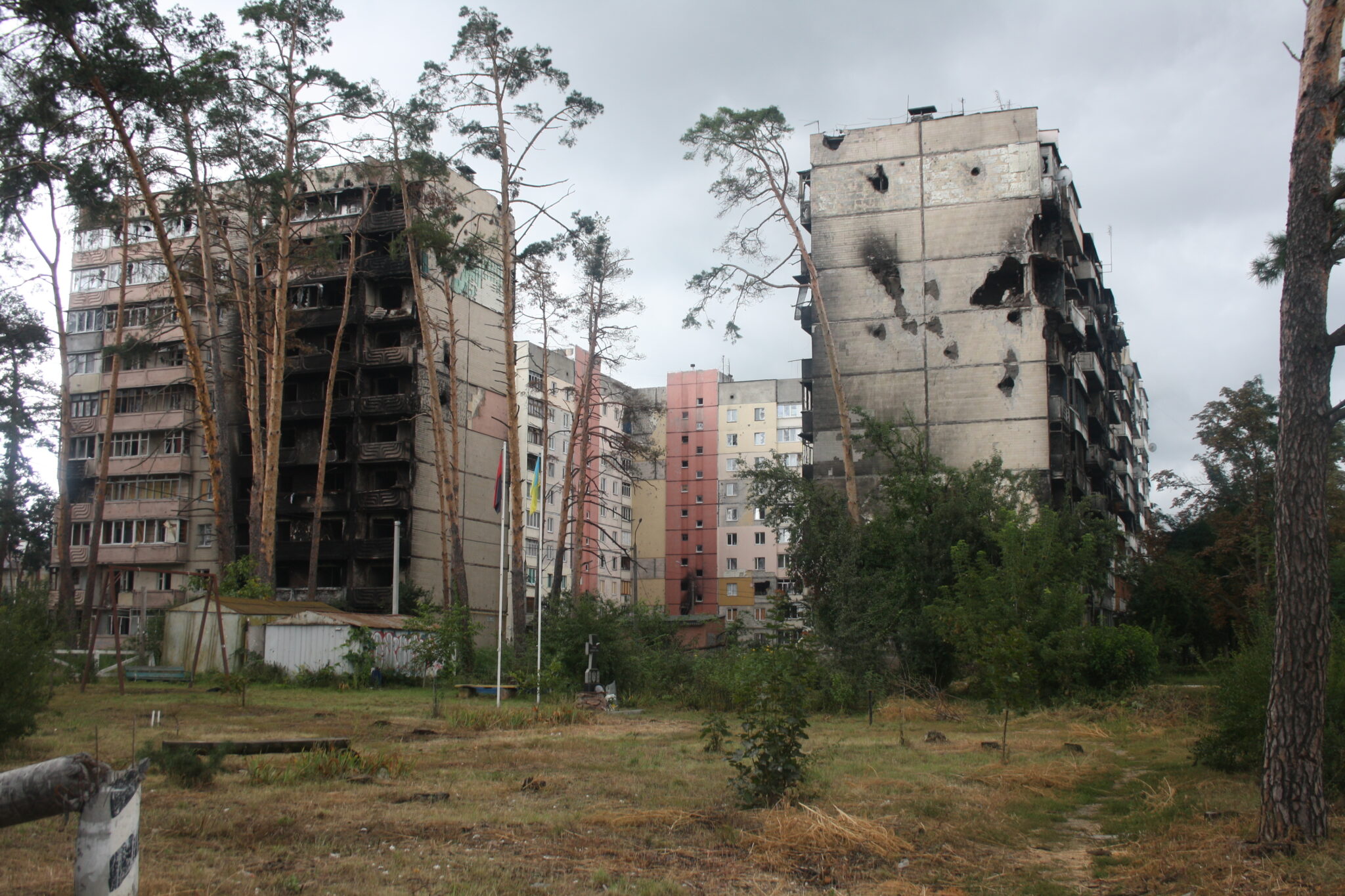
Several craters from shell explosions and broken trees were noted in a small part of the forest cleared by sappers in the national park. The team found treebark damaged by debris from explosions on some trees, a condition which can weaken and result in dieback (depending on the degree of damage, tree age, and growing conditions). Fragments of shells fired from Grad multiple rocket launcher systems were found.
At another site, the team counted 37 pine trees missing their crowns, broken during mortar attacks. Local residents told foresters that these trees saved their homes when they blocked flying projectiles. All these trees will decline; there is no way to restore them. Nearby is another site with 11 damaged trees.

The team also documented damage to tree root systems due to fortified trench construction. Additional study is needed to determine whether the trees will decline.
It was not possible to examine the entire forested area at the time of the team’s visit due to extensive landmine coverage and the presence of unexploded munitions.
Sviati Hory National Nature Park
Sviatі Hory NNP stretches across parts of Bakhmut and Kramatorsk Districts in Donetsk Oblast. It experienced extensive damage resulting from military combat and occupation. It was only possible to move around the park on asphalted roads for the time being.
Through car windows, the team observed Uragan rockets and Grad fragments sticking out of the ground, mortar mines deployed by sappers along the road, and numerous craters from explosions. In the fields and hillsides, “white tubes” are visible. They do not indicate buried communication cables, but rather are 9M27K transport containers fired from unguided rockets (MLRS Uragan). Some roads are lined with burned military equipment and civilian vehicles.
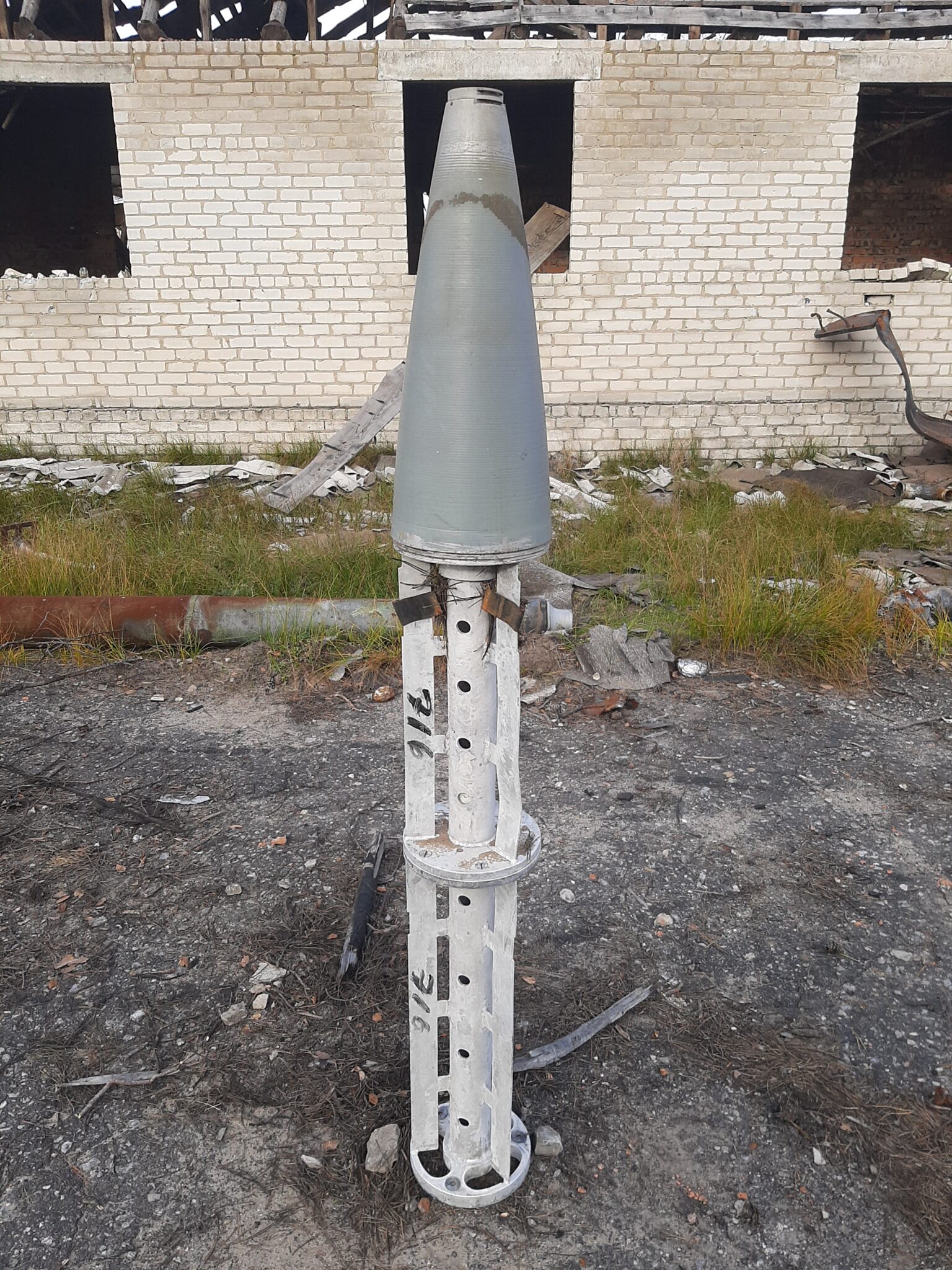
The park’s forests have suffered significantly from fires. Some of the fires were in the forest understory, meaning that only the underbrush burned, but other areas burned completely.
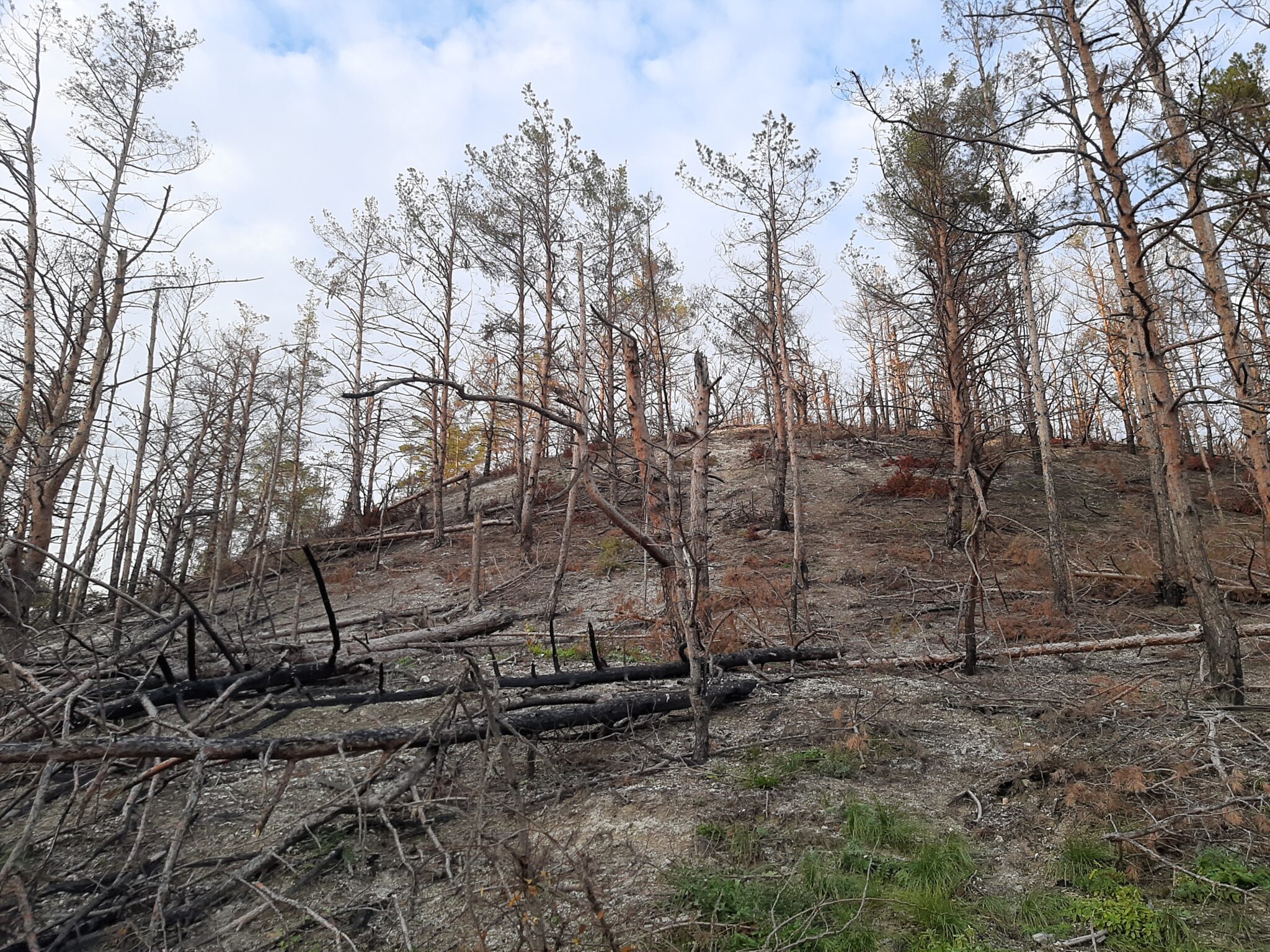
The entire territory of the park is contaminated with explosive munitions, requiring examination by sappers and subsequent demining. Such pollution poses a threat to both humans and animals. Wild animals are also blown up by mines, killed, traumatized, and wounded by explosions.
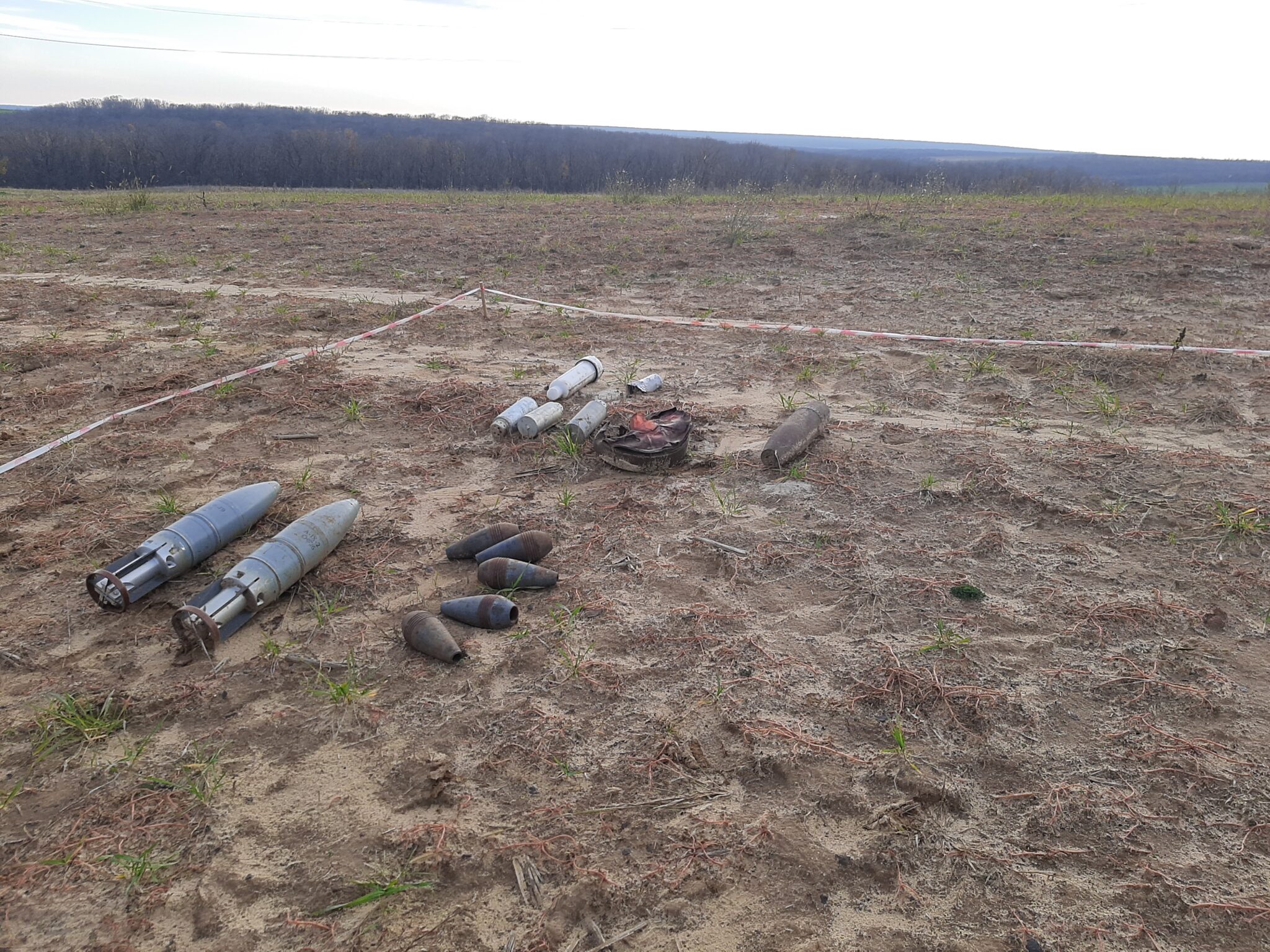
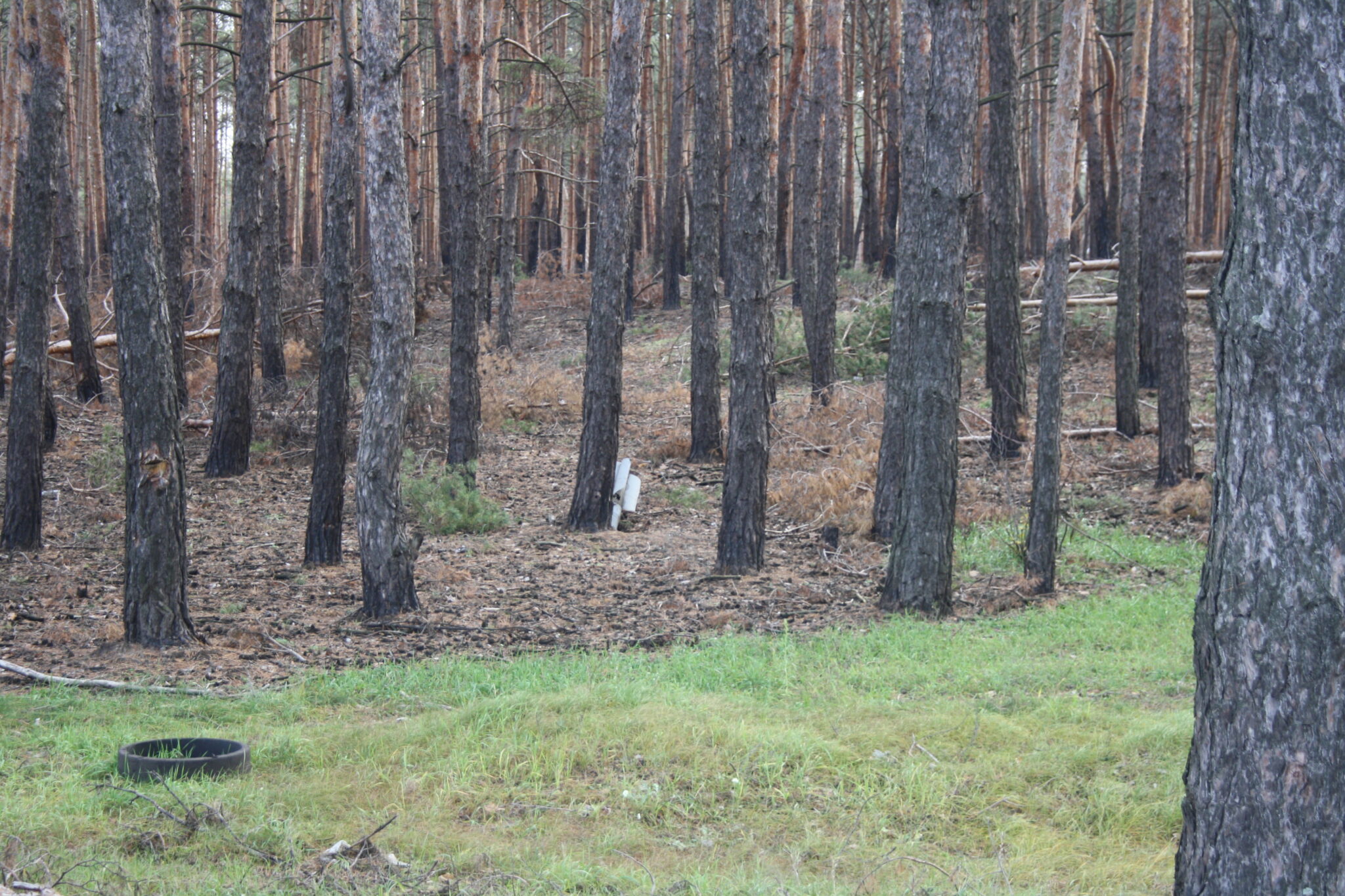
Today, it is clear that demining work will require many years. Moreover, these explosive objects are found not just on land but also underwater, which will require specialized divers and measures for underwater demining. Some water species are known to have been killed by explosions in the park’s rivers and lakes.
The NNP’s soil cover was damaged by shelling, construction of fortifications, and pollution by fuels and lubricants. Unique in biodiversity terms, chalk soil slopes were also harmed. During the expedition, the team collected soil samples in shell craters where possible and in accordance with safety regulations. Samples were also taken from craters where air-to-ground bombs fell.
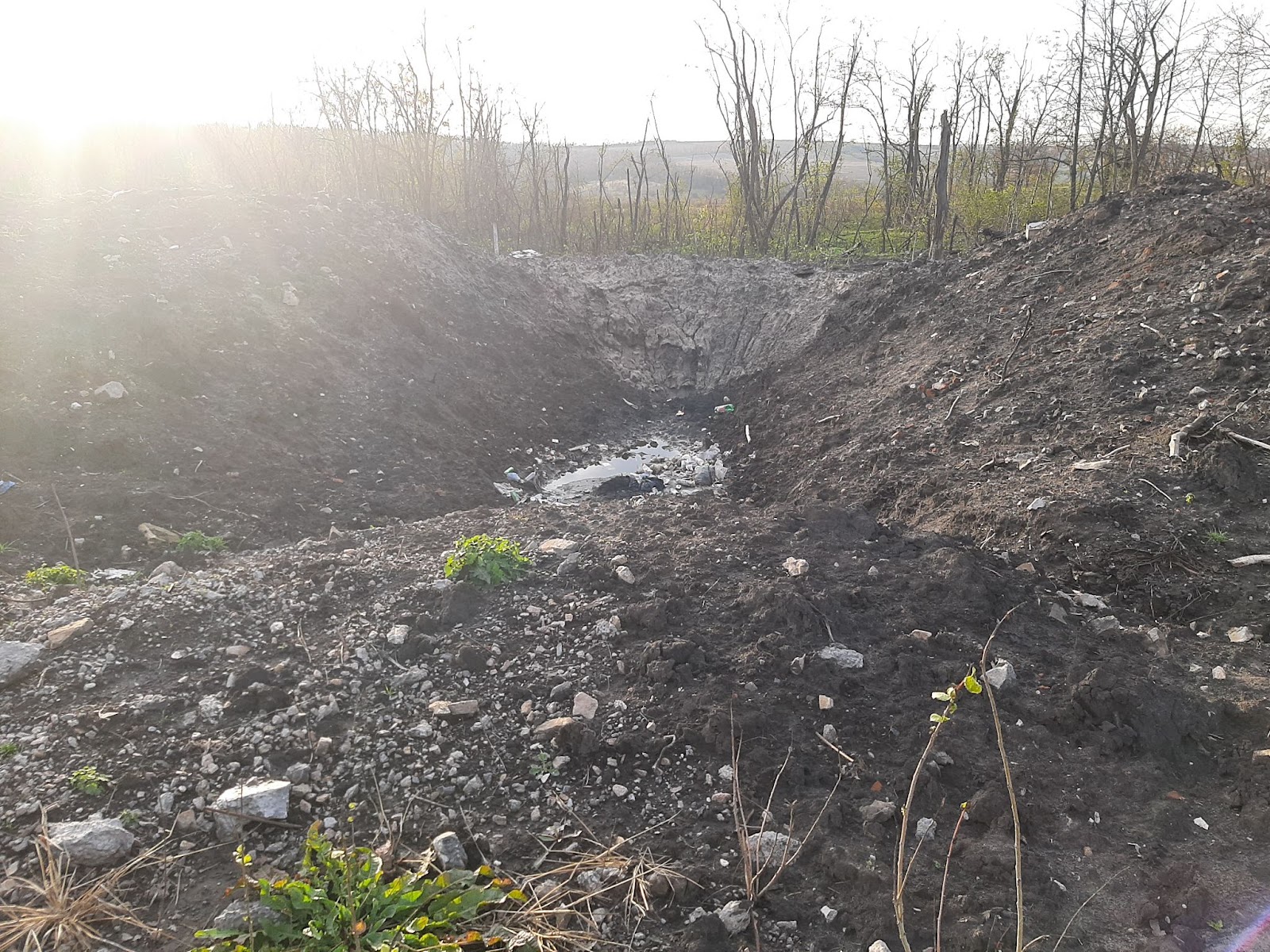
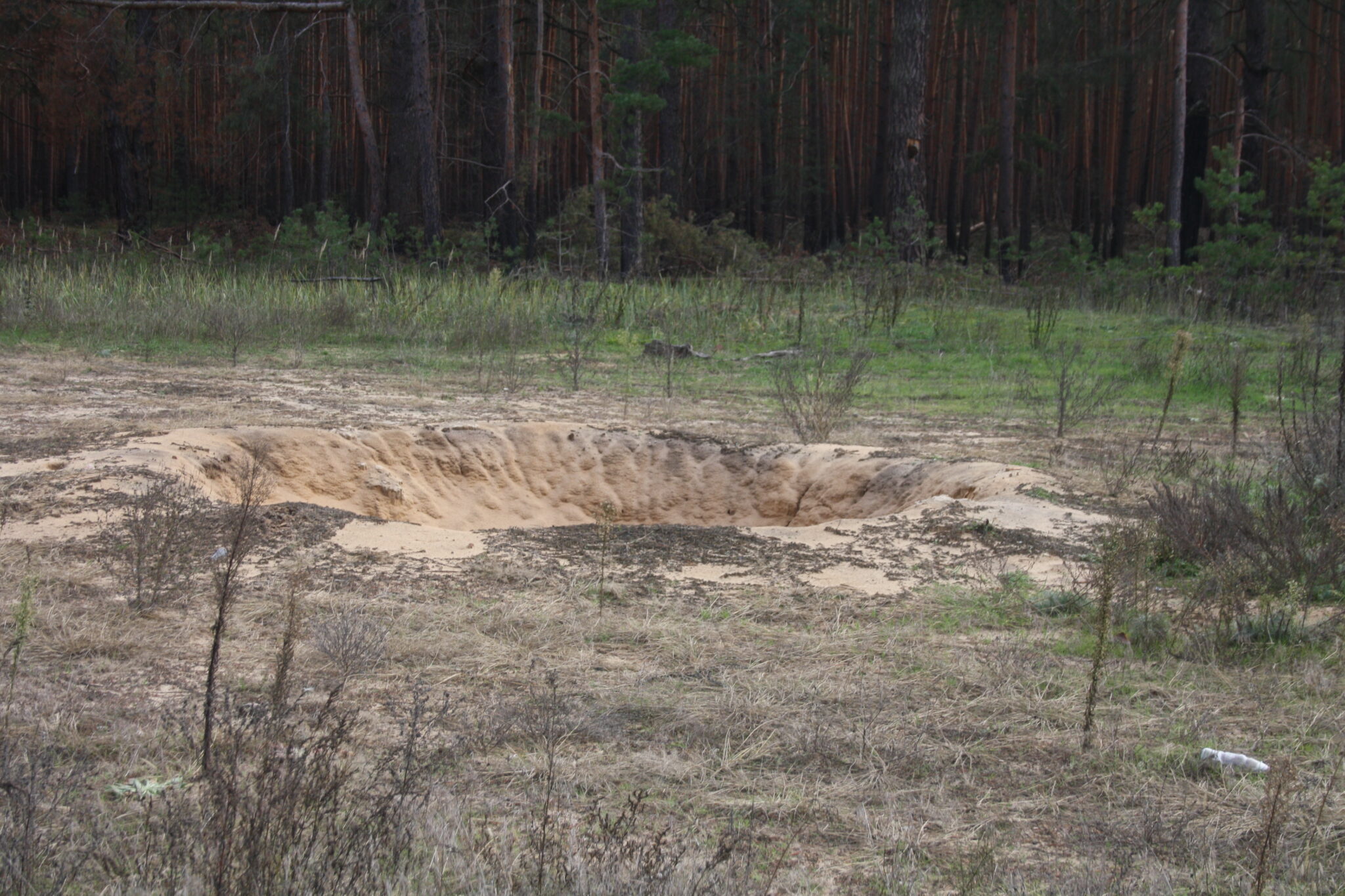
Structures in the park also suffered damage. The occupiers lived in the park administration building, while the science wing and the parking lot were completely destroyed by shelling. Infrastructure has been mutilated, even street lights powered by solar panels are broken, and the panels themselves have been stolen.
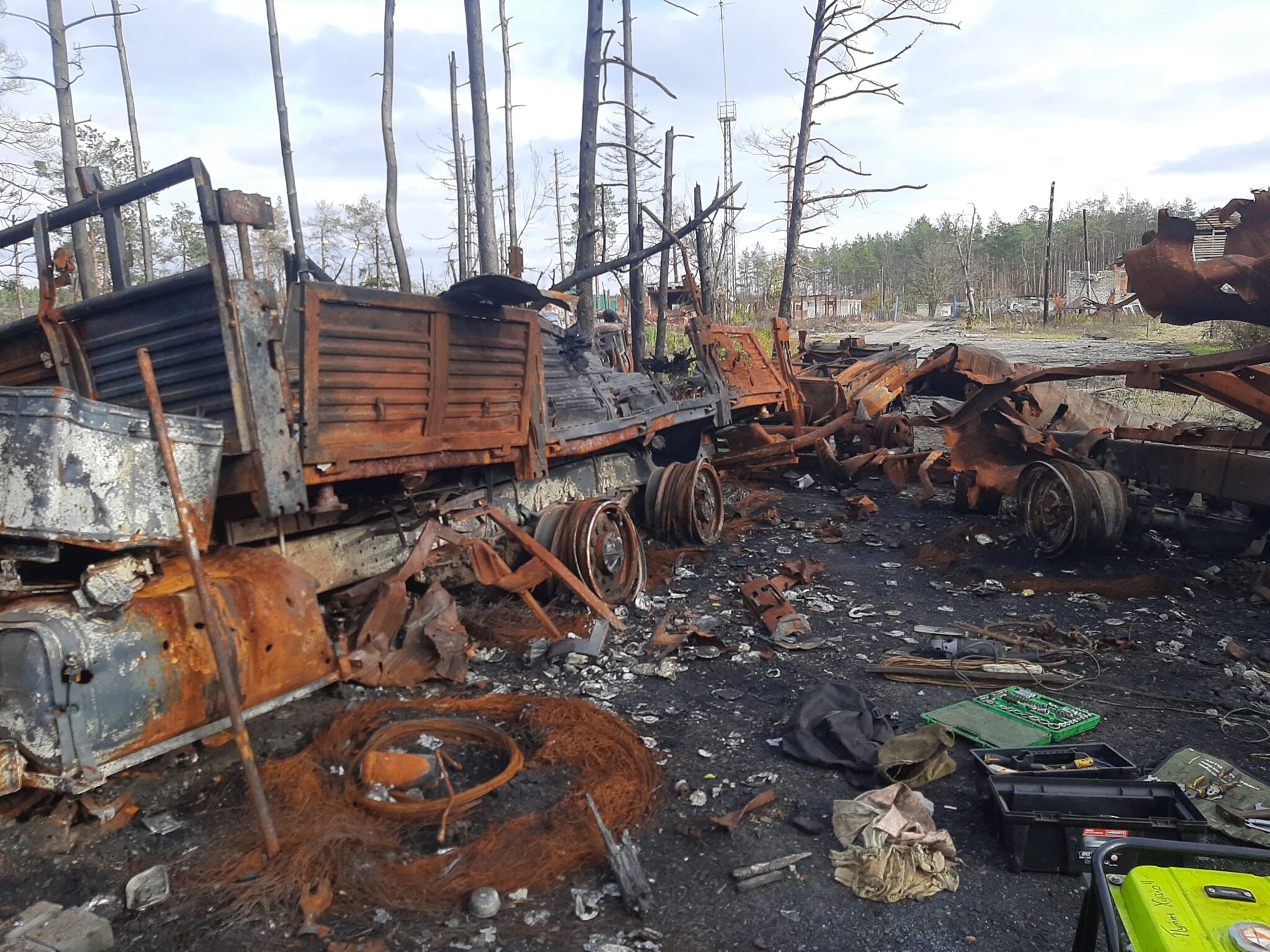
Park employees are not yet able to fully resume their work. Some of them fled the occupied territory and have yet to return. Two park employees were killed.
There are completely destroyed settlements near the park in which not a single inhabitant remains, nor an intact house. Today these villages are inhabited only by feral cats and dogs.
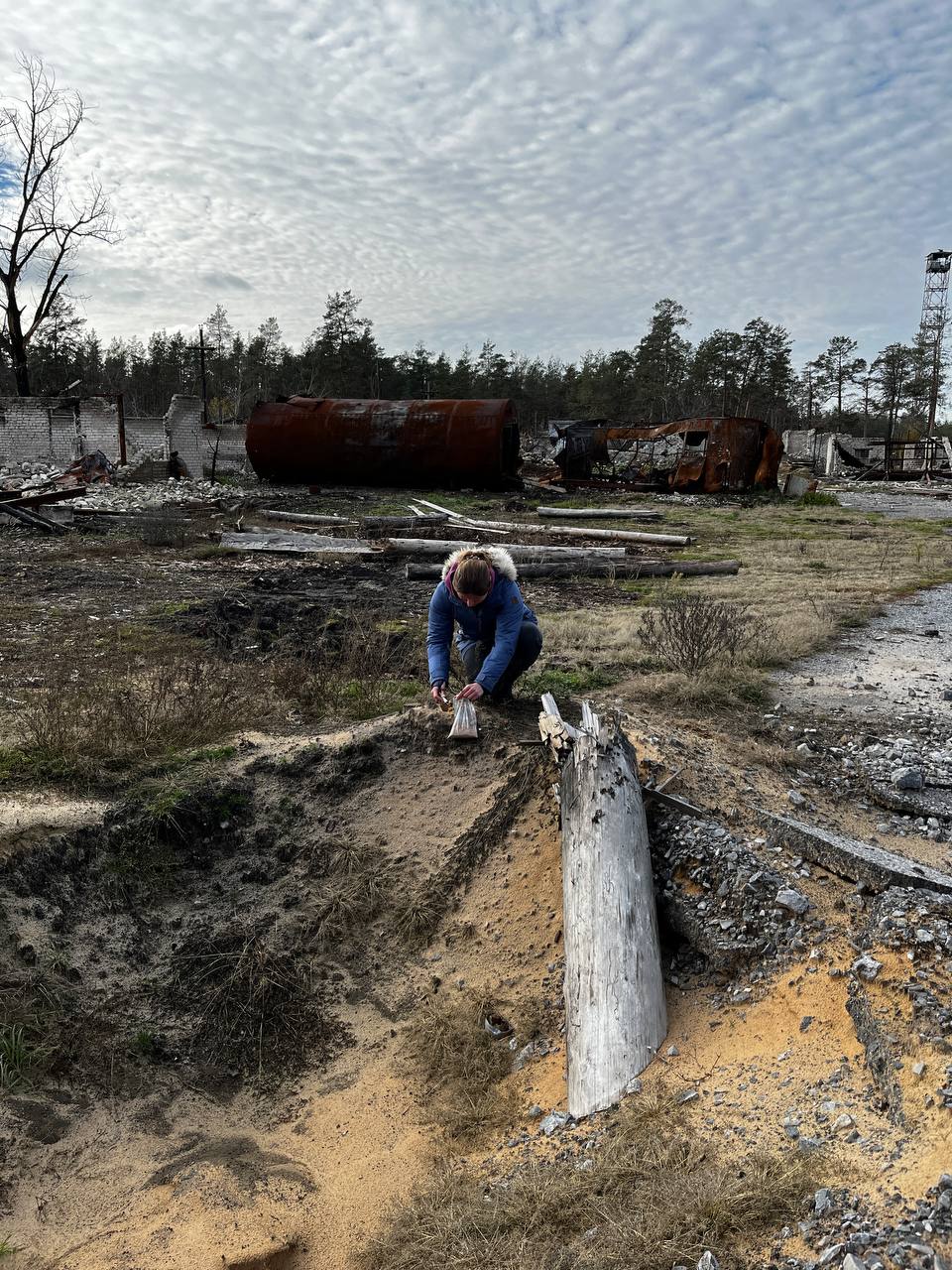
Kamyanska Sich National Nature Park
This park is located in occupied territory in Kherson Oblast on the right bank of the Dnipro River. Today, one can see the captured left bank of Dnipro from this location. Shell explosions are heard from time to time.
During its occupation, Russian military positions were located in the park. This resulted in damage to natural ecosystems, polluted areas, abandoned ammunition, construction of fortifications, and heavy equipment movements damaging the soil cover.

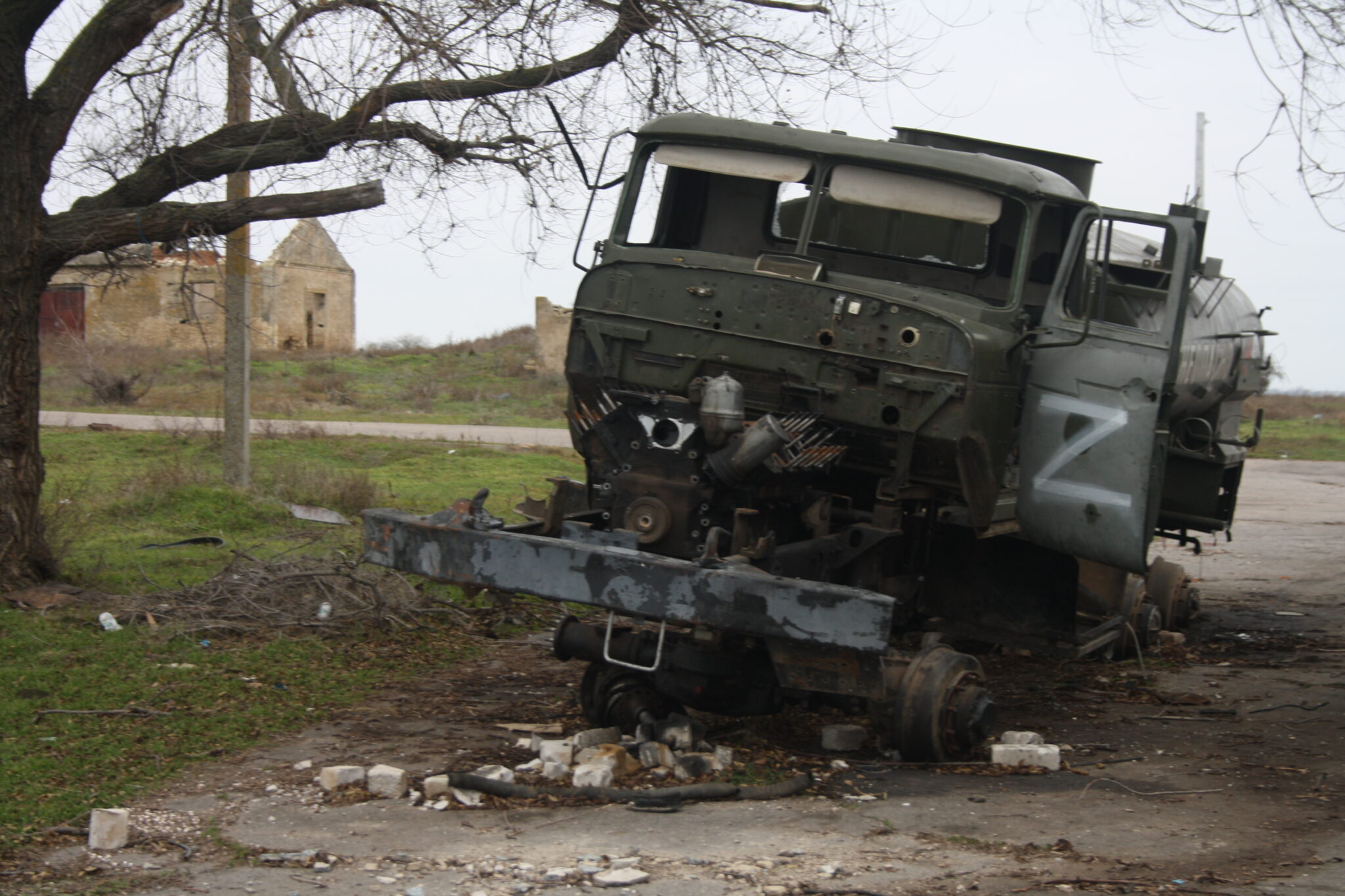
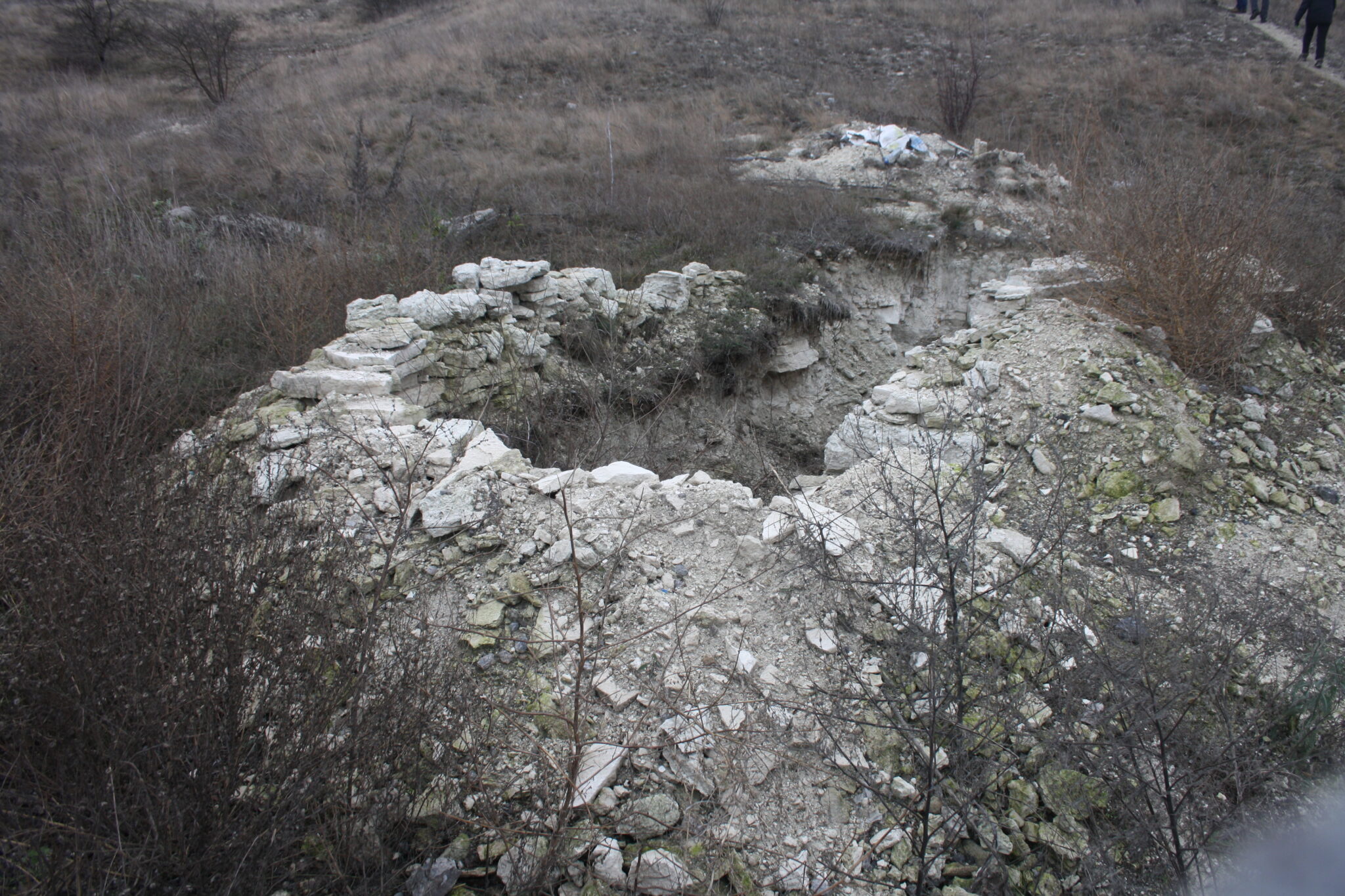
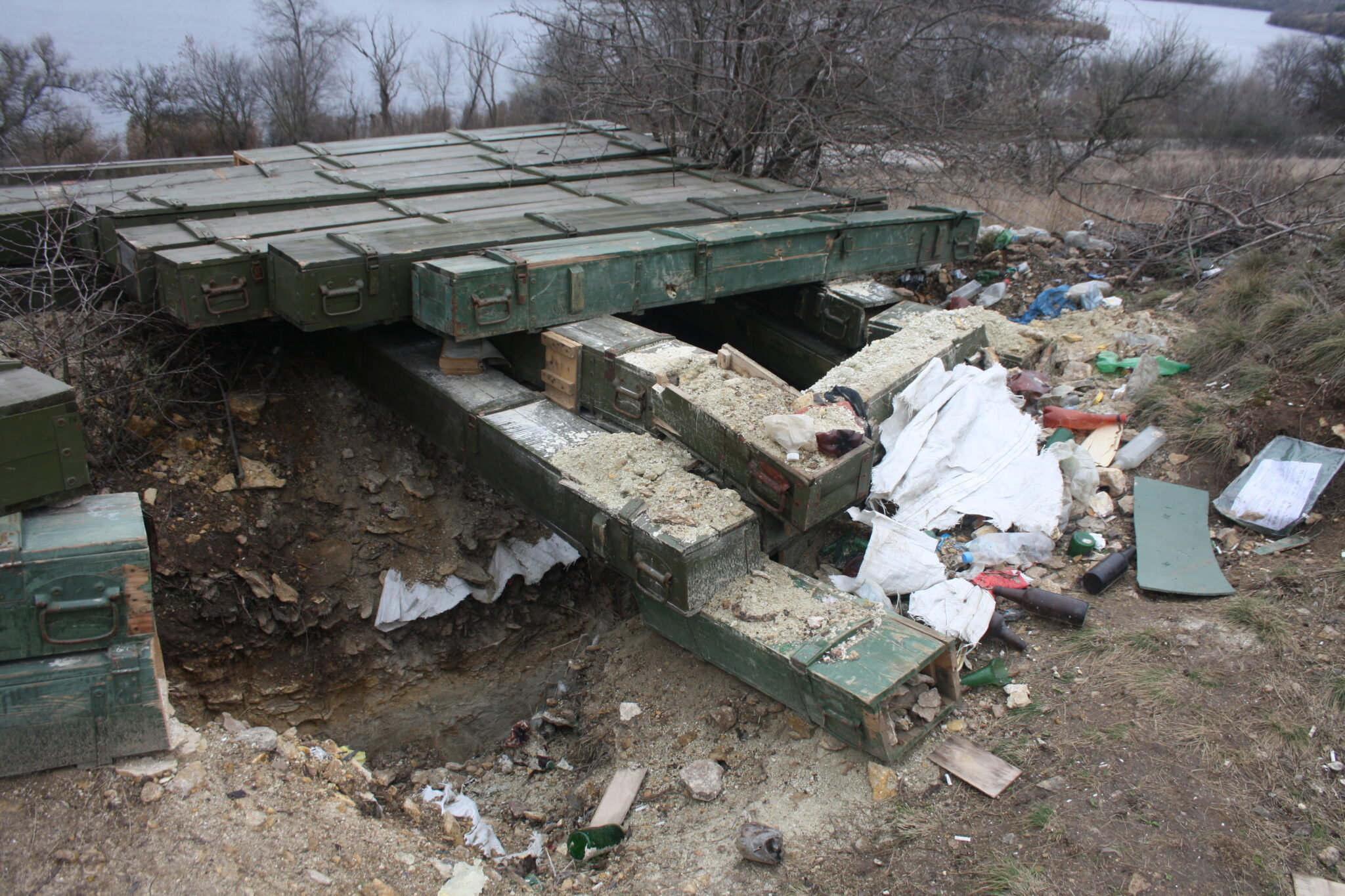
Surveying indicates that the park’s lands are polluted by explosives and demining work is needed. In the basement of one structure, the expedition team spotted a vibration-sensitive mine. There are fewer white tubes from Uragan rocket launchers, but tank shells scattered everywhere are visible from the slope.
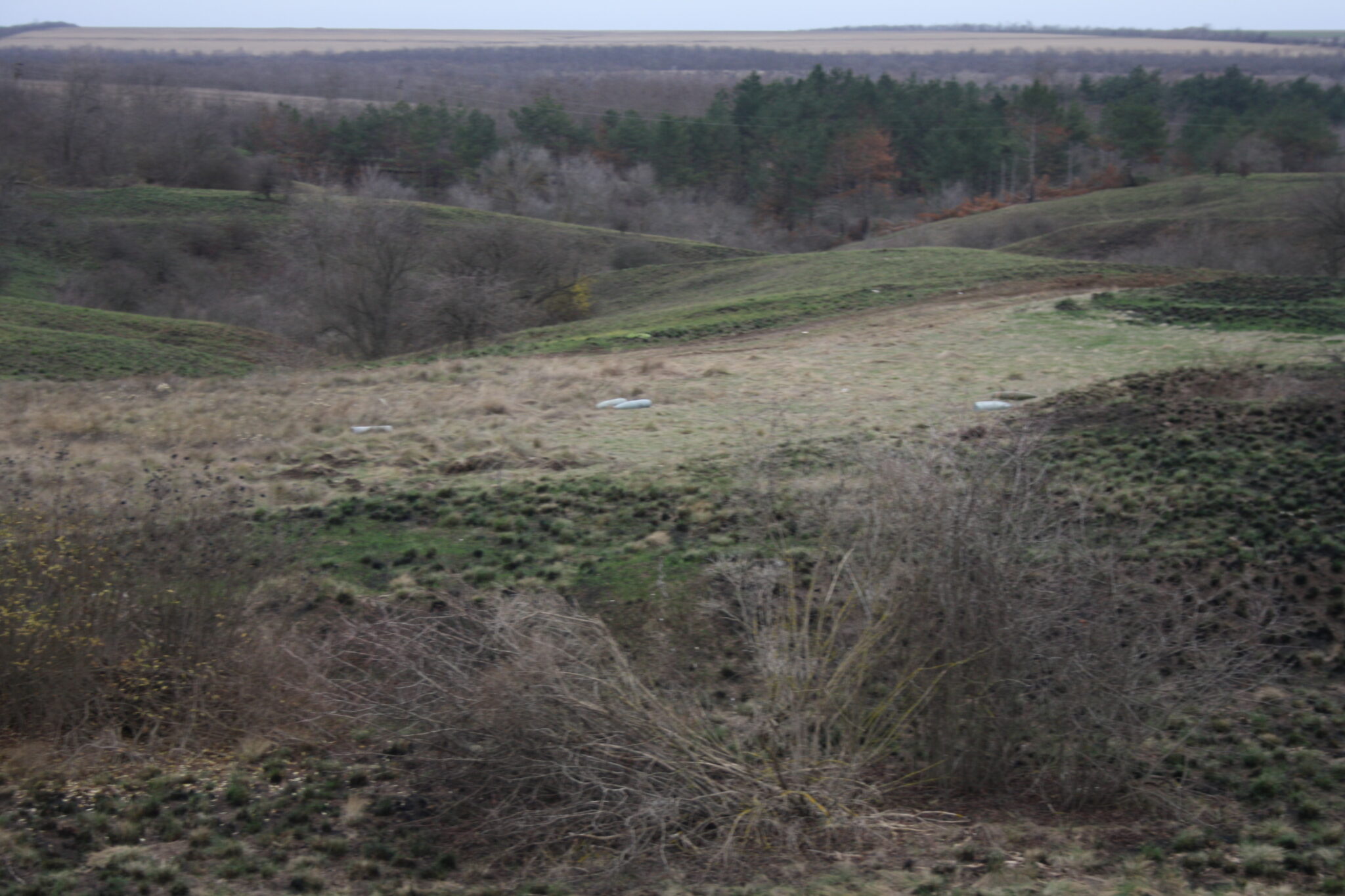
The team traveled to the park jointly with NNP director Sergei Skorik, employees of the scientific department Ivan Moysienko and Oleksandr Khodosovtsev, employees of the park’s security service, and environmental specialist Anastasia Drapaliuk.
The group surveyed and collected soil samples from craters made by explosions of C-300 rockets, Grad rockets, and three craters made by other munitions.
Expedition members noted that explosions damaged a limestone slope, habitat for a feathergrass species (Stipa capillata) and Lessing’s feathergrass (S. lessingiana), both listed in Ukraine’s Red Book.
During hostilities, 34 fires occurred in the park and administration buildings were damaged. The frontline still passes through Kamenska Sich NNP, in particular along the Dnipro River.
Nyzhnodniprovskyy National Nature Park
Today, this park is located on the front line. During the expedition, the team examined an extremely small area on the banks of the Dnipro River but was unable to meet with NNP administration or park staff.
The park includes the Dnipro River between Nova Kakhovka and the Southern Bug River’s confluence with the Dnipro. According to preliminary data, the most negative impact of the invasion here relates to sunken military equipment and possible fuel and lubricant spills, as well as explosions in the water area and land contamination by munitions.
Oleshky Sands National Nature Park
The park is located in an occupied area in Kherson Oblast. As part of the expedition, the team met with the NNP’s deputy director. Although it is not yet possible to visit the National Natural Park, it is known that forest fires and pollution due to munitions explosions occurred. Some cases of equipment theft are known.
****
Today, significant territories of Ukraine remain occupied, valuable environmental sites that represent the nature heritage of both Ukraine and the whole world: biosphere reserves, nature reserves, national nature parks, wetlands of international importance, Emerald Network territories, and important bird migration areas. War claims the lives and health of people and destroys our nature. In accordance with Ukraine’s current Criminal Code, such complex, long-term, and large-scale negative impacts on wildlife fall under the definition of ecocide (Article 441).
Currently, environmental scientists are prioritizing studies of the impact of military operations on the environment and identifying and preventing threats to the life and health of citizens, as well as damage to natural ecosystems. They are also collecting data on environmental crimes in partnership with lawyers: documenting violations, collecting evidence, cataloging losses, and studying practices for the restoration of natural ecosystems.
In total, during the expedition, Polyanska made 13 trips around Kyiv, Chernihiv, Kharkiv, Donetsk, Mykolaiv, and Kherson. During that time, teams collected information on the state of natural complexes, gathered 60 samples from shell craters, photographed damage, and collected munitions fragments.
The NGO Environment-Law-People has been studying the impacts of military hostilities on Ukraine’s environment since 2014. Analyses, manuals, and other information can be found on the organization’s website.

Kateryna Polyanska, Candidate of Sciences, is an environmental scientist at International Charitable Organization Environment-People-Law. For more information k.polyanska@epl.org.ua.


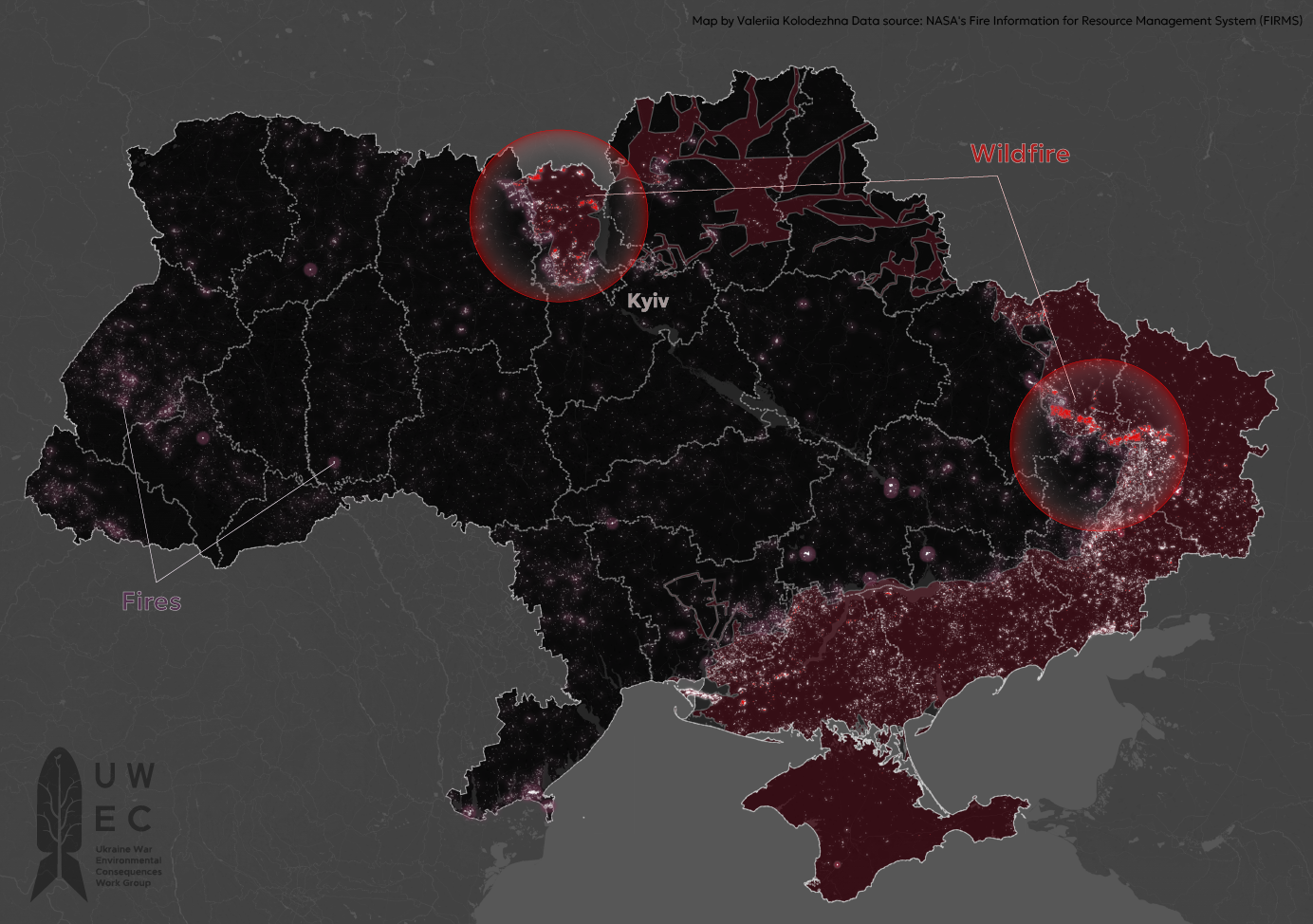
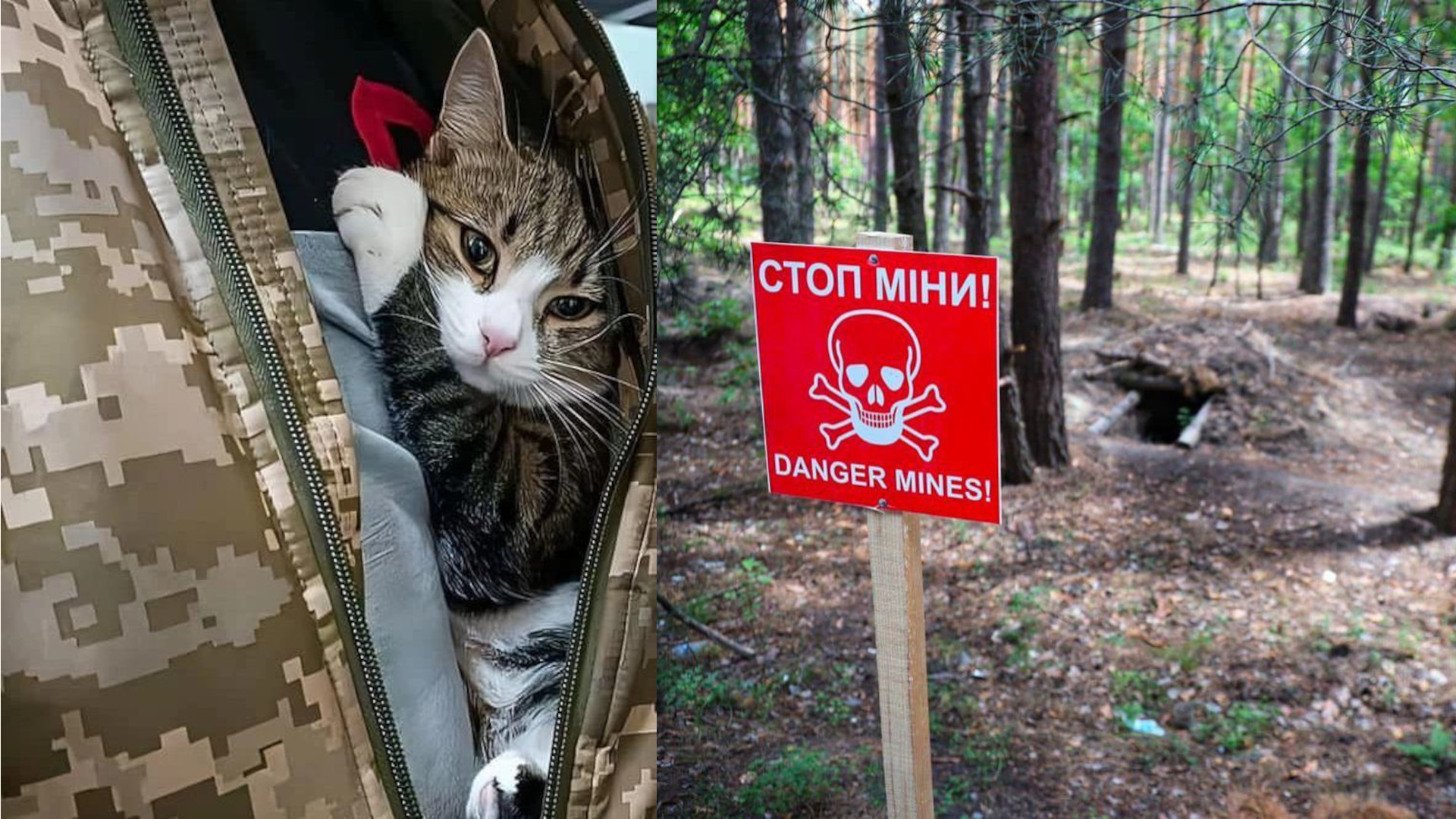
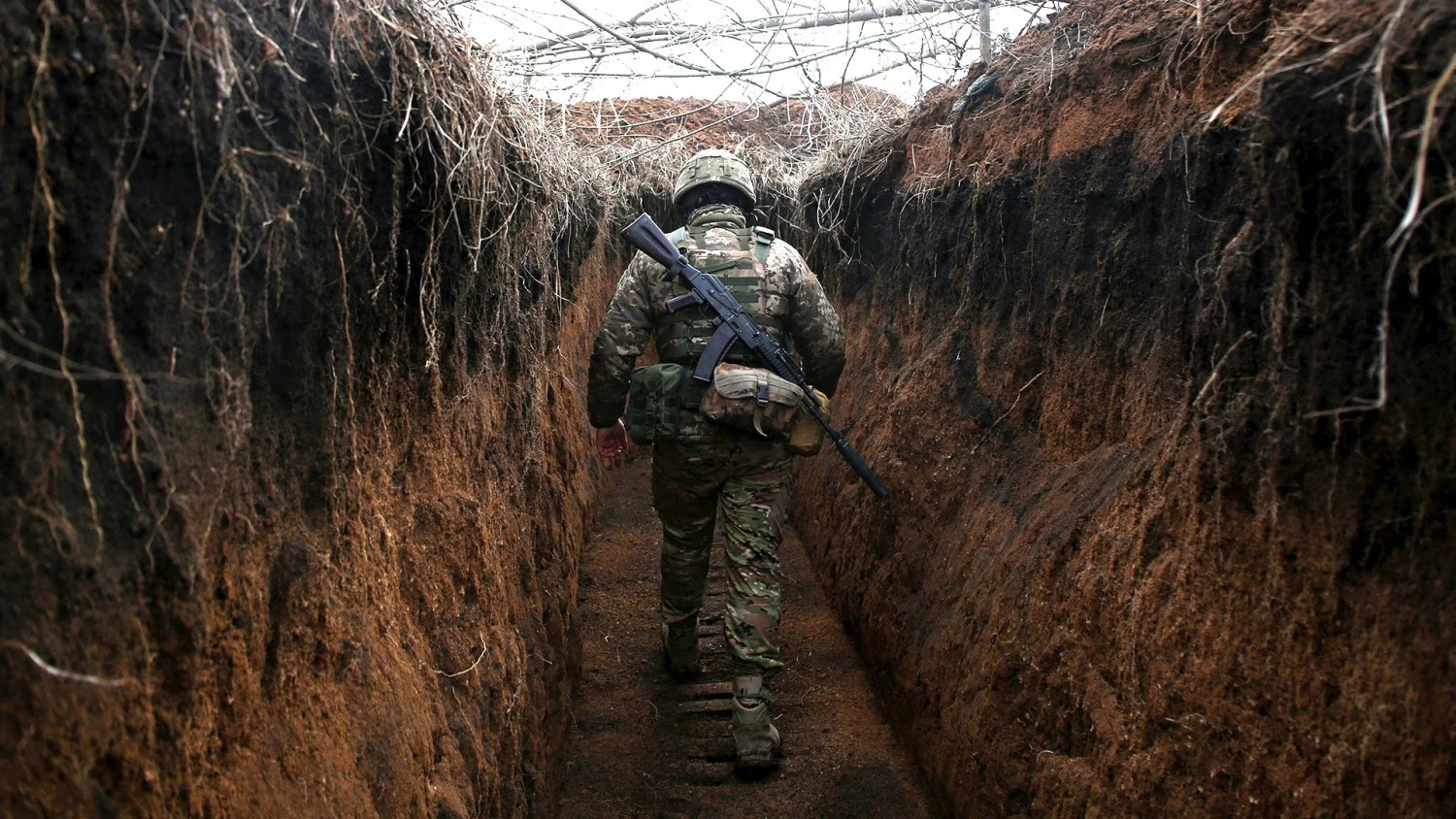
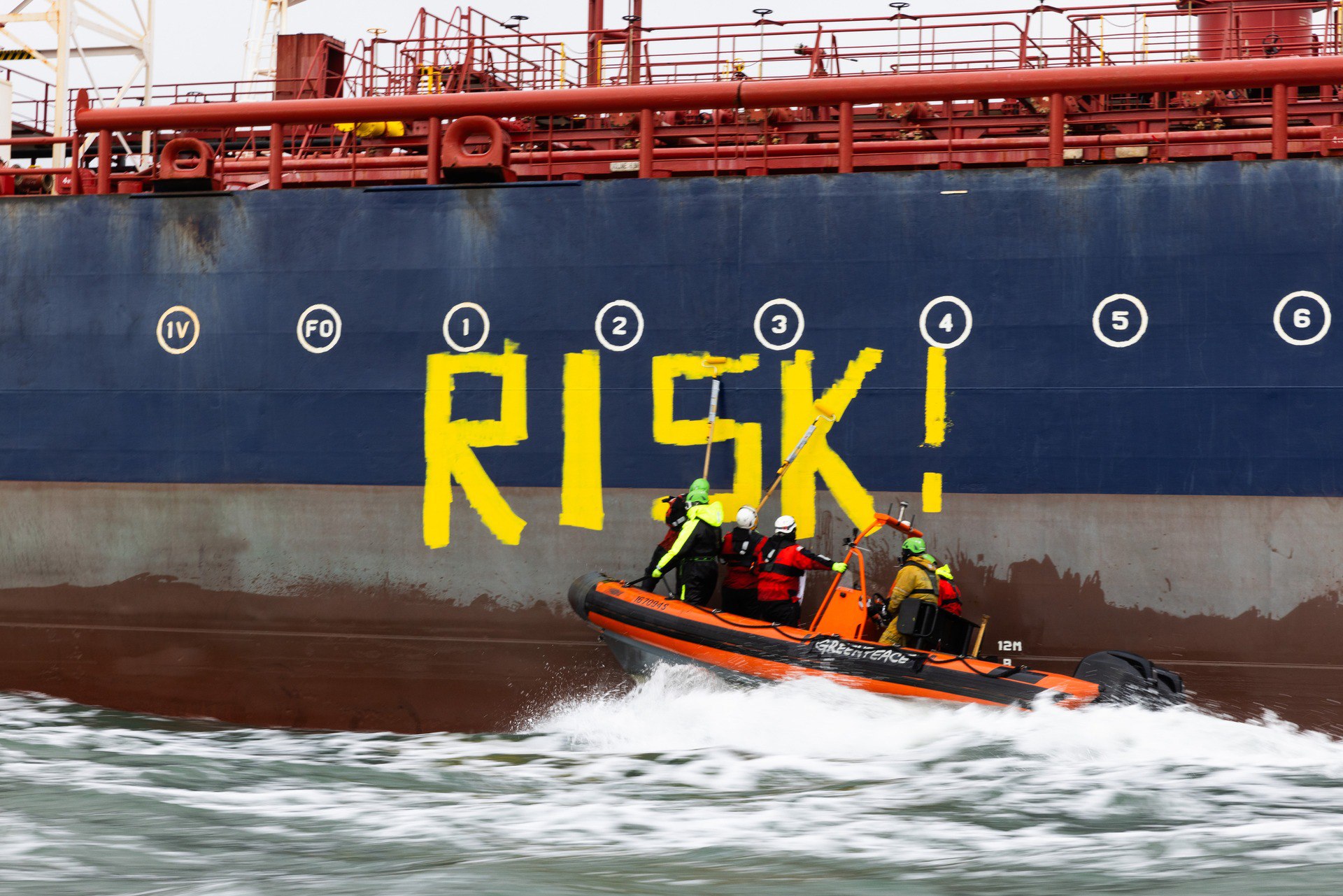
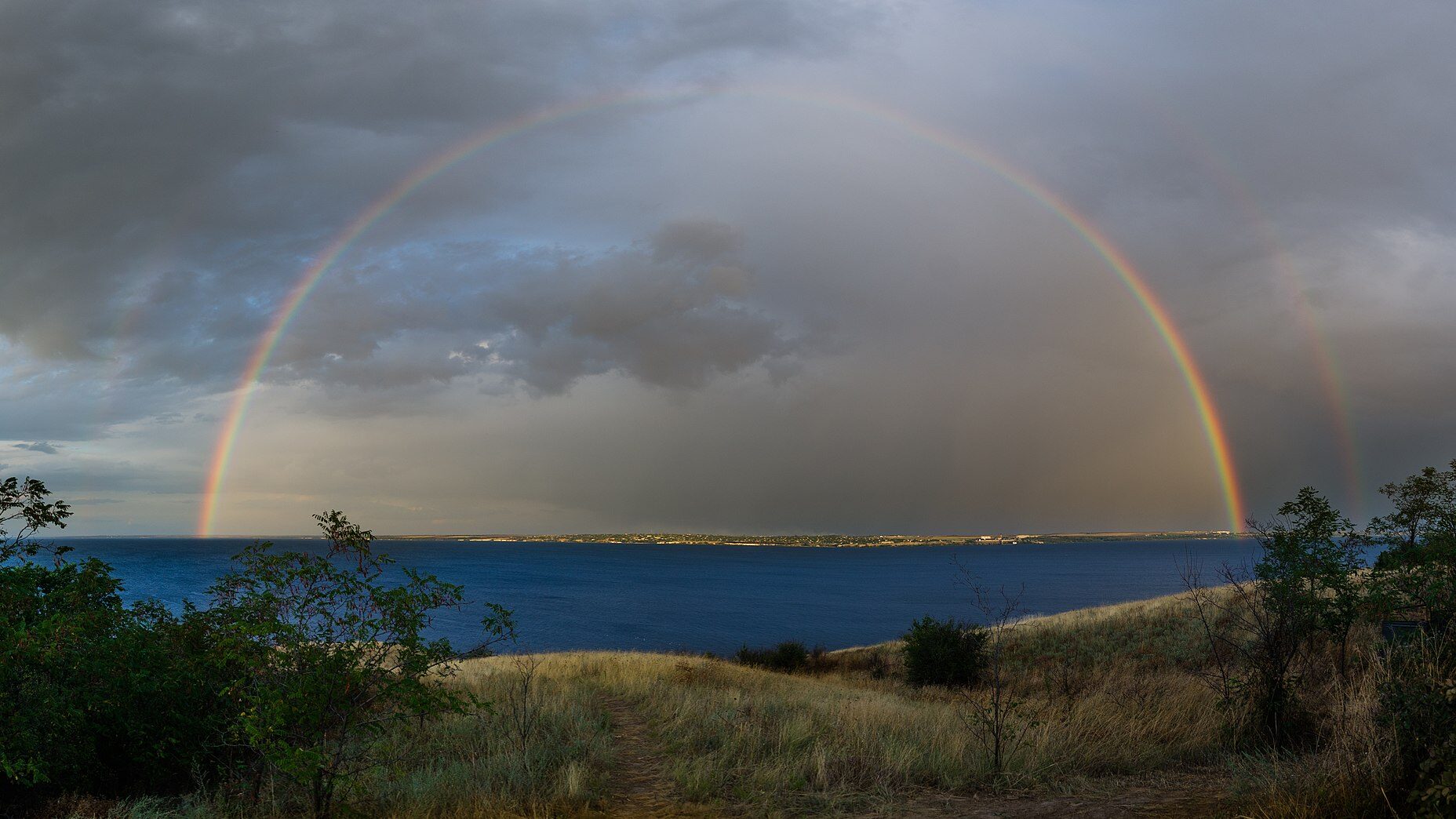

Comments on “Impact of Military Action on Ukraine’s Wild Nature”